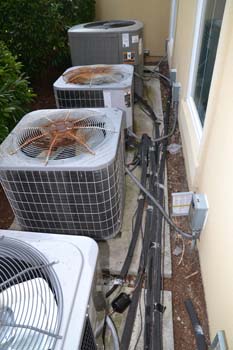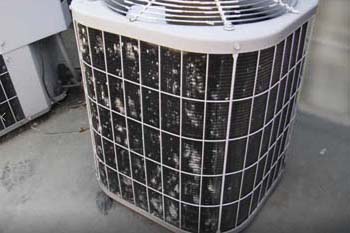The condensing units at a 270-unit apartment complex in North Carolina reportedly sustained damage during a hailstorm. The EIS engineering team assigned to the project was asked to evaluate the extent and scope of the alleged hail damage, and also to document the general condition of each condensing unit.

During the multi-day inspection, overall condensing unit photos and photos of any specific maintenance deficiencies were gathered. A limited number of units exhibited improper or incomplete repairs. Many of the coils were in need of cleaning, with dirt significantly obstructing airflow.
Photographs were taken of each of the four sides of all condensing units. The hail damage to each face of the condensing units varied widely depending on the orientation of the units with respect to the oncoming storm. In some cases, adjacent features provided shelter from the hailstones, while in other instances adjacent features deflected the hailstones into the condensing units. Some of the original units had been replaced; the new units were equipped with hail guards and did not sustain any damage.

